Botanical expeditions to the Northern Sporades
“In every culture and throughout time, flowers
have been central to the human experience.”
Vanessa Diffenbaugh.*
Botanical expeditions to the Northern Sporades
“In every culture and throughout time, flowers
have been central to the human experience.”
Vanessa Diffenbaugh.*
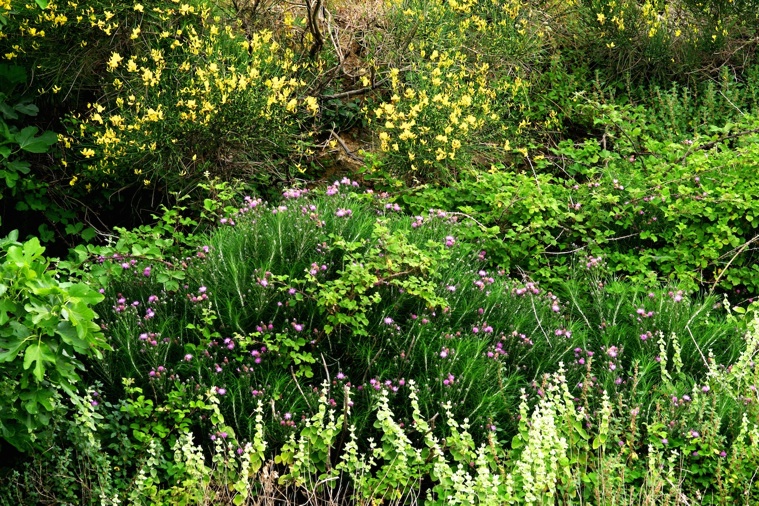
Rechinger commented on the beautiful Ptolostemon chamepeuce opposite Skopelos harbour
With its high mountains and scattered islands, Greece has long been known as a country with a rich and varied flora and has attracted the attention of botanists since ancient times. With the recognition of island complexes as biodiversity hotspots and natural laboratories with valuable but fragile ecosystems, it is not surprising that these scattered islands have attracted the attention of a number of famous botanists who have visited the Northern Sporades, collecting specimens and adding to the understanding of the natural environment, plant evolution, the influence of man and environmental change.
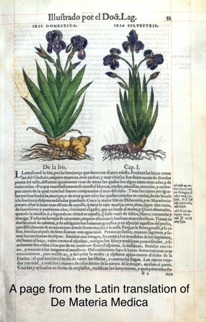
One of the first accurate catalogue of plants and their medicinal uses was Peri Hules Iatrikes -Περί ϋλης ιατρικής, known to the western world as De materia medica; it was written by a Greek doctor in the Roman army, Pedanus Dioscorides during the 1st century A.D. It was translated into latin and arabic and remained a major reference work throughout Western Europe until the Renaissance, a period of over 1,500 years. Surprisingly early Greek copies still exist in monasteries on Mount Athos.
It is generally considered that modern systematic botany to have its origins in the 18th century, when Carl Linnaeus introduced the latin binomial system, which is still in use. He had the ambition of naming every living thing in the natural world. He collected widely in Sweden and surrounding countries but never visited Greece, although he was sent specimens by other collectors and used epithets; graecum and creticum for those collected in the country. He is called the Flower King by today’s Swedish school children.
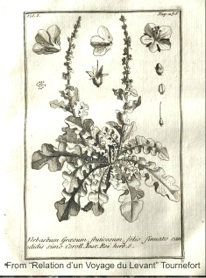
Travellers from Western Europe to Eastern Mediterranean, in the 18th and 19th centuries, were regarded as medics, lunatics or scientists. Lord Byron was often considered to be a lunatic and the travellers referred to here, either medics or scientists or, possibly, all three. It was then referred to as the Orient, the Levant, or Anatolia and was part of the Ottoman Empire.
One the earliest explorers to travel to the Levant was Joseph Piton de Tournefort, the French physician, botanist and explorer; he visited 38 Greek Islands and collected exotic plants for Louis XIV Jardin du Roi.
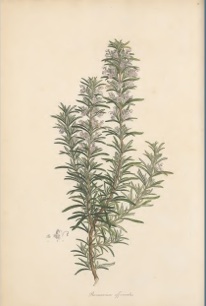
Another early traveller was the French explorer Dumont D’Urville who carried out a hydrographic survey of the Greek islands and as well as collecting plants, he also collected animals, rocks and antiquities, including the statue of Venus on Milos. After his excursions through the Cyclades he visited Skopelos in 1822.
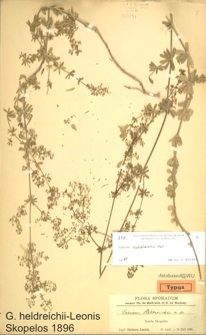
An important to visit the Sporades was Karl Heinz Rechinger, who in 1927 when still a student he journeyed with the zoologist Prof. Franz Werner throughout the Greek Islands.
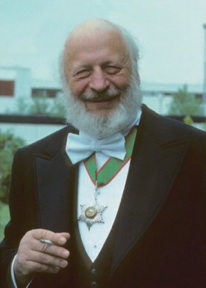
In 1927 Jany Renz, a Greek-Swiss chemist and orchidologist visited the Sporades, collecting 28 orchids in Skopleos, 14 on Skiathos and 8 on Alonissos, some of which had ont been identified on the island previously. He even found orchids on the islets of Georgeos and Lechousa.
During the second half of the 20th century Greek botanists came to the fore and with respect to the Northern Sporades, Dimitrios Phitos was the most important. Between 1961 and 1966 he made a number of excursions to the islands.
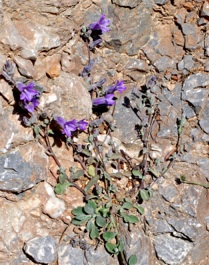
Dimitrios Phitos was appointed Professor of Plant Biology at Patras University in 1972 and he was the first president of the Greek Society of Biological Science. He was the lead editor of The Red Data Book of Rare and Threatened Plants of Greece published in 2009.
The french botanist E. Economidou botanized in Skiathos and Skopelos in 1969 and compared the flora of the two islands, concluding: “a remarkable floristic independence exists between these two islands although they are in close proximity.”
In 1988 Geogia Kamri with Phitos carried out a detailed botanical exploration of Gioura as an island with minimal human interference. The study concluded that the island had one of the highest rates of rare and endemic plants of any Aegean island and should have protected status and be left undisturbed, except for the occasional culling of the goats. It was subsequently included within the Natura 2000 area of the National Marine Park of Alonissos and Northern Sporades.

The interest of botanists in the Sporades has continued into the 21st century and Panayotis Dimopoulos, the current Professor of Botany and Ecology at the University of Patras, carried out a survey in 1999 and 2000. He later published an analysis of the flora 23 of 29 of the islands and islets; he demonstrated a high level of species richness and floristic dissimilarity between the islands except for Kyra Pangia and Giura, which are similar as they were once connected. The team has also concluded that the N. Sporades has more in common with the Kiklades than other islands in the Western Aegean, which includes Evia.
An italian team led by Cristina Cattaneo surveyed Skiathos and the two proximal islands of Tsougria and Asproniso; Skopelos and Alonissos between 2010 and 2013. Comparing their findings to those of Economidou (v. supra) it was noted that there were significant changes to the natural landscape of Skiathos due to anthropomorphic activities. She also observed a high incidence of newly introduced alien taxa on both Skiathos and Skopelos, 26 taxa on both islands.
Island complexes are considered to be biodiversity hotspots, and natural laboratories with fragile ecosystems and the studies completed on the Archipelago of the Northern Sporades has added to the understanding of the natural environment, plant evolution, the influence of man and environmental change. The study of plants and application of modern methods to their assessment continues to be an important activity and will help to understand and preserve the valuable natural environment.




Campanula scopelia